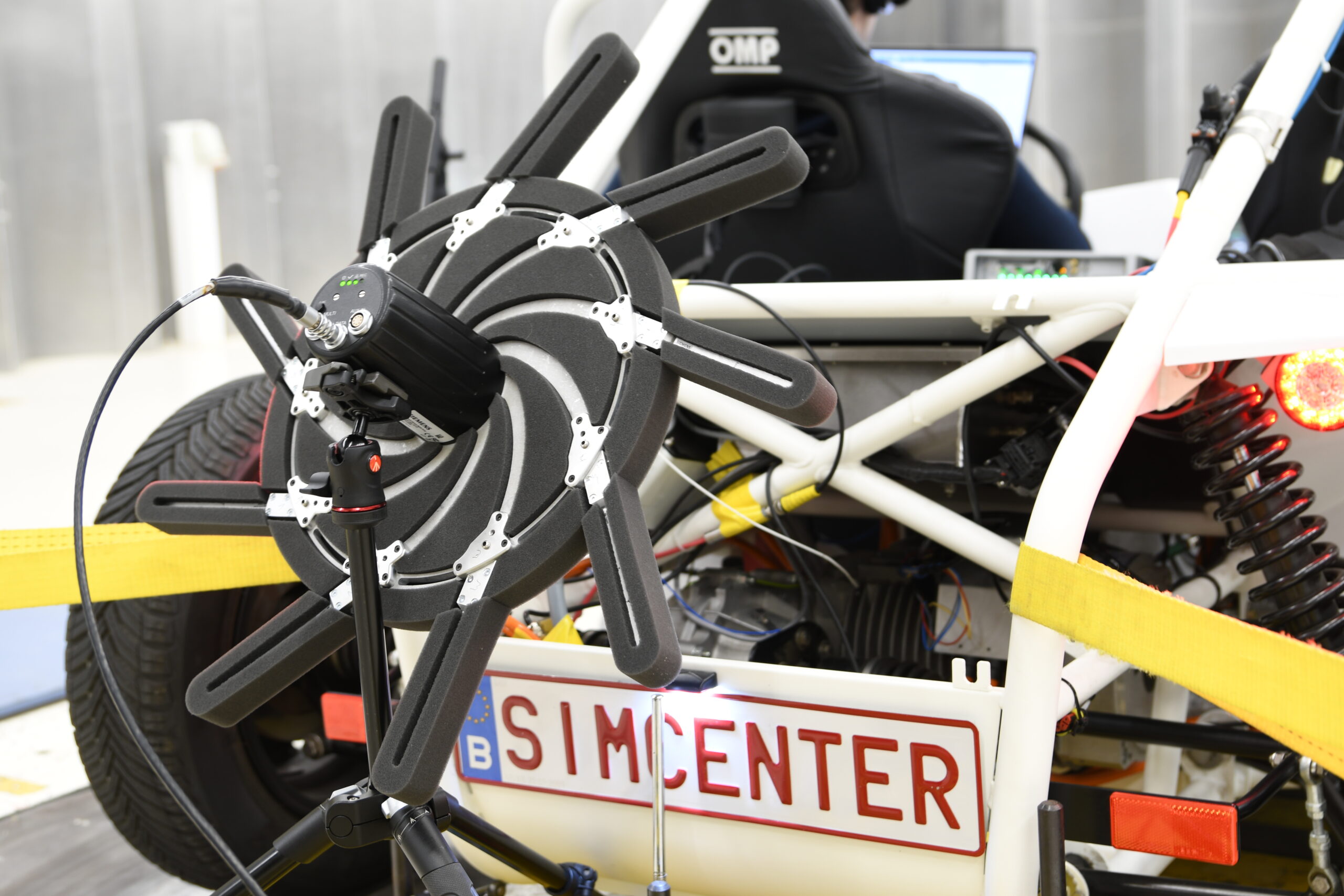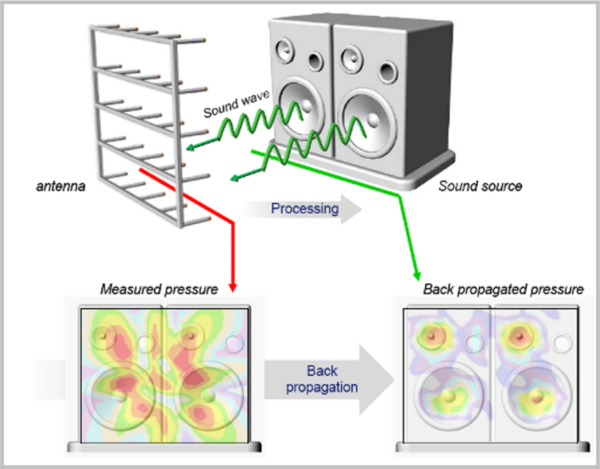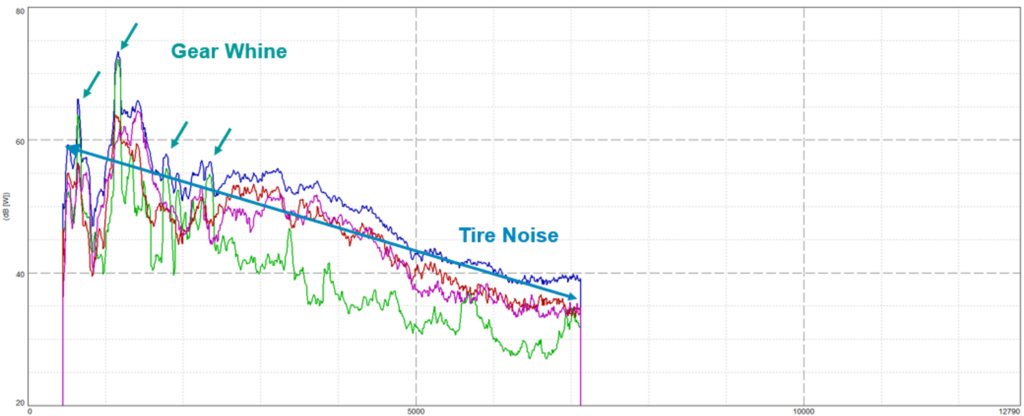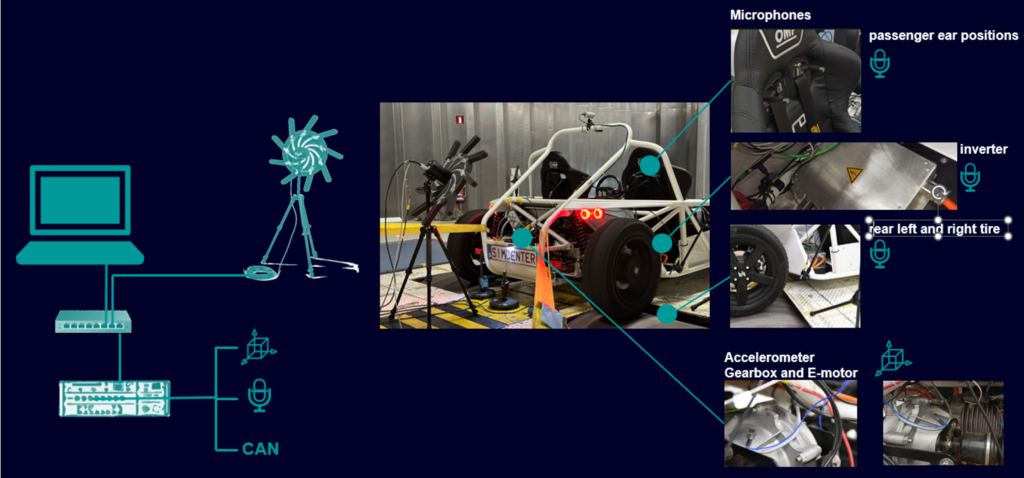Electric vehicle noise localization – 3 new examples

Noise pollution can have a serious impact on our daily life… “Research shows that loud sound can have a significant impact on human health, as well as doing devastating damage to ecosystems,” (citation).
With the usage of electric vehicles – Will there be less noise from electric vehicles?
Let me answer this question with my latest YouTube search on fan noise issues for electric vehicles. Just listen to the video.
The car driver is not at ease and wondering what is going on. If we hear something humming in our car, the first question that comes up is: Is there a problem with my car? Especially if we expect the electric car to be very silent. Yet, the second important question is, if the noise is annoying.
OEMs give their best to produce the least annoying cars or let us say the most comfortable cars. We from Siemens help in achieving these goals. Here I want to show you the efficient usage of the Simcenter Sound Camera.
Noisy motor fans can be already found in exhaust vehicles. Yet, the issue is more problematic for electric vehicles, since the electric engine is not covering this noise anymore. We are clearly missing the broadband exhaust noise – just one of the challenges of electric vehicles.
Electric motor ventilation source localization with Simcenter Sound Camera
As next step, let us see how ventilation noise can be localized with the Simcenter Sound Camera on the EDU of the SimRod, our demo vehicle.

The sound camera is installed very quickly. Within a few minutes, we can start the first measurements.
We can think of the Simcenter Sound Camera in several functions,
- Quickly and efficiently detect an occurring noise issue that needs to be understood and solved in short time.
- The Simcenter Sound Camera and Simcenter Testlab as advanced analysis tools for power evaluation per zone and precise localization of sources.
- The Simcenter Sound Camera with sensors in a bigger measurement setup.
- Either one can attach a few additional sensors to the sound camera, or
- Measure in combination with a Simcenter SCADAS and a large number of sensors.
In the next image, we see a scheme of the measurement setup, involving a Laptop, the Simcenter Sound Camera, and the SimRod test vehicle.

Below is an example of the Simcenter Sound Camera and the Simcenter Sound Camera App. The Simcenter Sound Camera App is used to visualize the fan noise sources. It shows the frequency content of the recorded noise and allows to zoom into smaller frequency ranges, and it shows the time-dependent evolution of the overall sound pressure level.
In the video, we see the fan noise frequency spectrum, including the first frequency peaks of the ventilator Blade Pass Frequency (BPF), and the harmonics.
Even if this is already a very nice example, this shows only the tip of the full Simcenter Sound Camera capabilities. Let us now see what else the camera can do.
Simcenter Sound Camera in a nutshell
The Simcenter Sound Camera is using the beam forming technique and Nearfield Acoustic Holography to back propagate the measured pressure to the source.

One can use iNAH (Nearfield Acoustic Holography), Bayesian focusing, or Deconvolution for source separation and increased spatial resolution even in low frequency.
With the Simcenter Sound Camera, one has the possibility to evaluate the radiated sound power. The radiated power is an objective criterion allowing to make proper A-B comparison.
Testlab has the capability to evaluate the radiated power per zones.
For sound pressure evaluations, Simcenter Testlab provides coherence weighting, very useful when measured with additional sensors. Examples are shown below.
Here are some useful links about the sound camera:
- Here you get to know more about the Simcenter Sound Camera.
- Learn more about the fundamentals of sound source localization.
- Want to know more about the Bayesian focusing?
Gear whine and tire noise
E-motor cooling fan noise is one among many noise sources in electric vehicles. Those are tire noise, road noise, electric motor noise, gear whine noise, inverter/electronics noise, wind noise, the noise of the ventilation system, battery cooling noise, etc.
Of course, it is important to know which one of the sources is the noisiest, the most annoying, or contributing most to the driver’s or passenger’s ear, see below.
Curious about the radiated power contribution per zones?
In the analysis below, we see that the dominant broadband noise is coming from the tires. At certain frequencies, the gear whine noise is taking over. The power is evaluated per zone, directly output in Simcenter Testlab.

How to use coherence weighting and Bayesian focusing?
Bayesian focusing – we zoom on the gearbox and the electric motor with our Simcenter Sound Camera. First we are localizing the noise source of the main frequency peak. Then we use Bayesian focusing to even more precisely localize the source, see below in the Simcenter Testlab analysis example.
Coherence weighting – in the next measurement setup, we are adding some accelerometers and microphones, and a Simcenter SCADAS. The measurement setup is shown below.

Adding sensors, enables us to make a meaningful coherence analysis. Coherence allows to evaluate the causality between two signals. Here we look at the causality between the located source and one of the sensor signals.
- For the microphones at the passenger ear positions, this means, we see in the hologram which source is mainly heard by the passenger.
- For the microphones and accelerometers close to the tires and EDU, we see in the hologram which source in the hologram is “related” or coherent with them.
In the next video, we will investigate the coherence of the different sensors signals compared to our sources. Let me take away already the conclusion of below example: The passenger hears mainly the gearbox whine rather than the tire noise. A clear indicator of where to work on to improve acoustic comfort.
What have we learned?
Let us summarize, we have seen in this article that the Simcenter Sound Camera is very easy to set up and it has plenty of capabilities. The standalone function allows the usage of the Simcenter Sound Camera very efficiently in a short time. The Simcenter Sound Camera, in combination with Simcenter Testlab has plenty of advanced analysis capabilities, such as sound power evaluation, Bayesian focusing and coherence weighting for sound pressure results. The Simcenter Sound Camera is an added value, when used stand-alone, and when used with other sensors in any larger measurement setup, to get even further insights.


